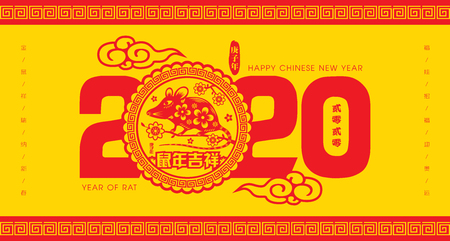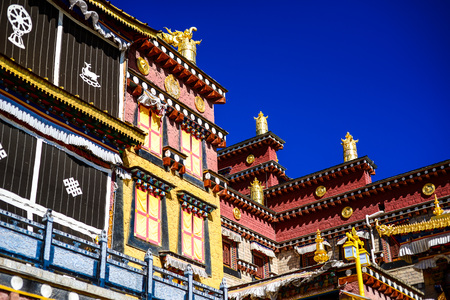1. Ancient Beginnings: Feng Shui in Historical China
Feng Shui, which literally means “wind” (feng) and “water” (shui), has a rich history that dates back thousands of years in ancient China. The practice started as a way for people to understand their environment and find harmony within it. In its earliest days, Feng Shui was deeply rooted in the philosophical ideas of Taoism and the belief that everything is connected through energy, or “Qi.” This energy flows through nature, people, and places, shaping the balance and fortune of those who live there.
The Philosophical and Cultural Foundations
Feng Shui’s origins are closely linked to some of the most influential Chinese philosophies:
| Philosophy | Key Concepts | Influence on Feng Shui |
|---|---|---|
| Taoism | Harmony with nature, balance of opposites (Yin & Yang) | Guided how spaces should flow naturally and harmoniously |
| Confucianism | Order, respect for tradition, social harmony | Shaped rules for organizing homes and communities |
| The Five Elements | Wood, Fire, Earth, Metal, Water | Inspired design choices for buildings and interiors to support positive energy flow |
Early Applications: Architecture and City Planning
Ancient Chinese builders used Feng Shui principles when choosing locations for villages, homes, palaces, and even burial sites. They believed that proper placement could bring prosperity and health to residents. Some early examples include:
- Homes: Houses were built facing south to capture sunlight and warmth, with mountains behind for protection.
- Cities: Major cities like Beijing were designed according to Feng Shui guidelines, using grid layouts aligned with cardinal directions.
- Tombs: Burial sites were carefully chosen based on landforms and water flow to honor ancestors and ensure good fortune for descendants.
A Simple Comparison: Traditional vs. Modern Use
| Traditional China | Modern America (Preview) | |
|---|---|---|
| Main Focus | Naturally fitting with landscape; cosmic balance | Enhancing comfort, wellness, productivity at home/work |
| Main Tools Used | Luo Pan compass, observation of landforms (“dragon veins”) | Simplified tips: furniture placement, color choices, indoor plants |
| Cultural Importance | Tied to religion and ancestor worship; respected by emperors | A lifestyle trend; valued for well-being & aesthetic appeal |
The Legacy Continues
The roots of Feng Shui go deep into the soil of ancient China’s culture and beliefs. Over time, these ideas have traveled far beyond Asia—eventually taking root in modern America’s homes and workplaces. But before we look at how Feng Shui made its journey westward, it’s important to appreciate the wisdom and intentions that shaped this ancient art from the very beginning.
2. Philosophy and Principles: Understanding the Core Concepts
Feng Shui, with roots in ancient China, is based on the idea that our surroundings deeply influence our health, happiness, and success. As this practice has found its way to America, its core principles remain the same but are now interpreted in ways that fit modern lifestyles and Western homes. To truly appreciate Feng Shui, its important to understand its key concepts: Qi (pronounced “chee”), the Bagua map, and the harmony between people and their environment.
Qi: The Flow of Energy
Qi is at the heart of Feng Shui. It refers to the invisible energy or life force that flows through everything—our bodies, our homes, and the natural world. In Feng Shui, a space with good Qi feels welcoming, fresh, and balanced. If Qi becomes blocked or stagnant, it can lead to discomfort or even bad luck. In American homes, this could mean rearranging furniture for better movement or letting in more natural light to keep energy flowing smoothly.
The Bagua Map: Your Home’s Energy Blueprint
The Bagua map is a tool used in Feng Shui to analyze how different areas of your home relate to various aspects of your life such as wealth, relationships, and health. By overlaying the Bagua map onto your floor plan, you can see which parts of your home connect with specific life goals and make adjustments to enhance positive energy.
| Bagua Area | Life Aspect | Common Enhancements |
|---|---|---|
| Wealth & Prosperity | Finances & Abundance | Add healthy plants or symbols of abundance |
| Fame & Reputation | Recognition & Social Life | Use bright lighting or display awards |
| Love & Relationships | Romance & Partnerships | Pair items (like candles or art) |
| Family & Health | Well-being & Family Harmony | Add wooden elements or family photos |
| Center | Overall Balance | Keep clear and uncluttered |
| Creativity & Children | Inspiration & Offspring | Add art supplies or playful decor |
| Knowledge & Wisdom | Personal Growth & Learning | Create a reading nook or study area |
| Career & Life Path | Work & Journey in Life | Add water features or career-related objects |
| Helpful People & Travel | Mentors & Opportunities | Add metal objects or travel souvenirs |
The Importance of Harmony with Your Environment
A central goal of Feng Shui is creating harmony between people and their surroundings. This means arranging spaces so they feel comfortable and support well-being—something that resonates strongly in American culture today. Whether it’s by reducing clutter, choosing calming colors, or bringing nature indoors with plants, these simple actions can help foster balance and peace at home.
The Modern American Approach to Feng Shui Principles
The philosophy behind Feng Shui isn’t just about tradition—it’s about adapting age-old wisdom to fit contemporary lives. Many Americans use these principles not only for spiritual reasons but also because they make practical sense: a clean, organized space often leads to a clearer mind and greater happiness. By understanding these core concepts, anyone can start using Feng Shui to create spaces that feel both inviting and inspiring.

3. From East to West: The Journey of Feng Shui to America
Feng Shui, with its roots in ancient Chinese philosophy and practice, took a fascinating journey before arriving in the United States. Its introduction to American culture was shaped by immigration patterns, growing curiosity about Eastern traditions, and the influence of key individuals who acted as bridges between cultures.
How Feng Shui Came to America
The earliest traces of Feng Shui in America can be found in the late 19th and early 20th centuries. Chinese immigrants brought their customs and beliefs, including Feng Shui, as they settled in areas like California during the Gold Rush and later in cities like San Francisco and New York. For many years, these practices remained within Chinese-American communities, shaping the design of homes and businesses in Chinatowns across the country.
Key Individuals and Events
| Name/Event | Contribution |
|---|---|
| Lillian Too | A popular author from Malaysia whose books in English made Feng Shui accessible for Western readers. |
| Grandmaster Lin Yun | Brought Black Sect Tantric Buddhist Feng Shui to the U.S. in the 1980s; taught at universities and attracted American students. |
| Publication of Feng Shui Books (1990s) | A surge of bestsellers introduced practical tips for home design based on Feng Shui principles. |
| Media Coverage | TV shows, magazines, and newspapers started featuring Feng Shui experts, helping spread awareness among mainstream audiences. |
Why Americans Embraced Feng Shui
Americans began resonating with Feng Shui for several reasons:
- Desire for Harmony: Many people were seeking ways to create peaceful, balanced spaces at home and work.
- Interest in Wellness: As holistic health became more popular, Feng Shui fit naturally into trends focused on mind-body wellness.
- Diversity of Application: Feng Shuis adaptability meant it could be used for interior design, landscaping, office planning, and even business branding.
- Cultural Curiosity: Americans have long been interested in learning from different cultures, especially those offering fresh perspectives on well-being and success.
The Modern Impact of Feng Shui in America
Today, you can find Feng Shui consultants advising homeowners, real estate agents using its principles to stage houses, and businesses designing offices that promote positive energy flow. The journey from ancient China to modern America has made Feng Shui a unique part of American life—blending old wisdom with new ways of living.
4. Modern Adaptations: Feng Shui in Contemporary American Life
As Feng Shui made its way from ancient China to the United States, it didn’t just stay the same—it evolved to fit the fast-paced, diverse lifestyles of modern Americans. Today, you can find Feng Shui influencing everything from home décor to office layouts and even popular wellness trends. Let’s take a closer look at how Americans have embraced and adapted Feng Shui in everyday life.
Feng Shui at Home: Creating Harmony in American Spaces
Many Americans use Feng Shui principles to design comfortable and inviting homes. Instead of following traditional Chinese architecture, people focus on arranging furniture for better energy flow, choosing soothing colors, and adding plants for natural balance. Popular magazines and TV shows often feature tips on using Feng Shui for cozy living rooms or restful bedrooms, making these ideas easy to try at home.
Common Feng Shui Elements in American Homes
| Element | How It’s Used |
|---|---|
| Plants | Add greenery to improve air quality and bring life into spaces. |
| Mirrors | Placed to reflect light or open up smaller rooms. |
| Color Choices | Select calming colors like blues and greens for relaxation areas. |
| Decluttering | Remove unnecessary items to create peaceful, organized rooms. |
Feng Shui in the Workplace: Boosting Productivity and Well-Being
Offices across America have started incorporating Feng Shui concepts to help employees feel more focused and less stressed. This might include rethinking desk placement, maximizing natural light, or using artwork that inspires positive feelings. Many businesses believe that even small changes based on Feng Shui can lead to happier teams and greater success.
Feng Shui Tips for American Offices
- Avoid sitting with your back to the door—face the entrance when possible for a sense of security.
- Add small plants or water features for a calming effect.
- Keep workspaces tidy to allow creativity and energy to flow freely.
Feng Shui Meets Wellness Trends
The rise of holistic health in America has helped Feng Shui become part of popular wellness routines. People use it alongside yoga, meditation, and mindfulness practices to create balanced lives. Wellness centers and spas may offer Feng Shui consultations as part of their services, helping clients design homes or offices that support mental and physical health.
5. Blending Traditions: Feng Shui Meets American Culture
When Feng Shui first arrived in the United States, it brought with it thousands of years of Chinese wisdom about balancing energy, or “qi,” to create harmonious living spaces. But as it merged with American culture, this ancient practice needed to adapt to new values, lifestyles, and even architecture. Let’s take a closer look at how traditional Feng Shui has blended with the American way of life, what challenges have come up, and the creative ways people are making it work.
Adapting to American Homes and Values
Most American homes are designed differently from traditional Chinese houses, so applying classic Feng Shui principles can be tricky. For example, many U.S. houses have open floor plans or attached garages—features not found in old Chinese homes. Americans also tend to value personal expression and practicality, which sometimes clashes with strict Feng Shui guidelines.
| Traditional Feng Shui | American Adaptation |
|---|---|
| Emphasizes symmetry and specific room placement | Focuses on comfort and creativity in layout |
| Relies on natural materials and elements | Merges modern décor with subtle Feng Shui touches |
| Strict compass directions for furniture | Flexible use of space based on lifestyle needs |
| Deep connection to family history and ancestors | Personalizes spaces with family photos and memories |
Challenges When East Meets West
The biggest challenge is finding balance between tradition and modern life. Americans often want quick results or visible changes, while traditional Feng Shui is more focused on gradual energy shifts. Some rules—like avoiding mirrors facing the bed or not having a staircase directly opposite the front door—can be hard to follow in typical American architecture.
Unique Approaches in America
Instead of following every rule exactly, many Americans take a “Feng Shui-inspired” approach:
- Mixing Styles: Combining Feng Shui ideas with favorite colors, furniture, and art.
- Simplifying Rules: Focusing on decluttering, good lighting, and bringing nature indoors—practices that fit any culture.
- Cultural Fusion: Blending Eastern symbols (like bamboo or lucky coins) with Western home décor.
- Wellness Focus: Using Feng Shui as part of overall wellness routines, including mindfulness and self-care.
How Americans Are Making Feng Shui Their Own
The result is a unique mix that honors the roots of Feng Shui while fitting right into busy American lives. Whether rearranging a home office for better productivity or adding plants for positive vibes, people across the U.S. are finding ways to make this ancient wisdom work for them—one step at a time.


